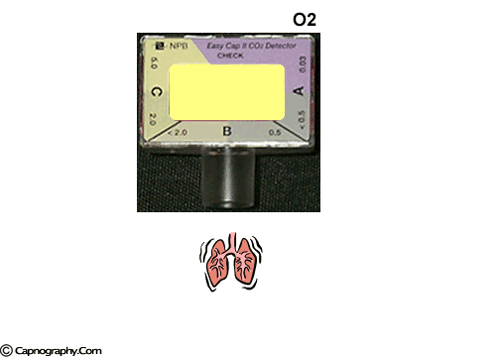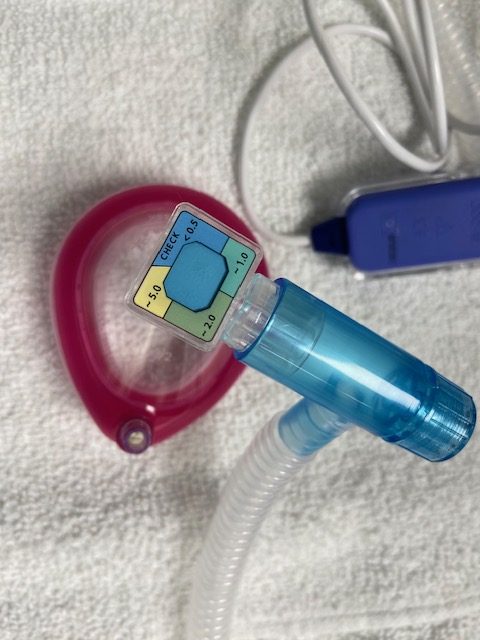Physics of Capnography
Chemical method of CO2 measurement

A pH-sensitive chemical indicator changes color on exposure to CO2 |
FEF end-tidal detector:
A pH-sensitive chemical indicator is enclosed in a plastic housing and is connected to the gas stream between the endotracheal tube and the anesthesia circuit. The pH sensitive indicator changes color when exposed to C02.1 The color varies between expiration and inspiration, as C02 level increases or decreases. The color changes from purple (when exposed to room air or oxygen) to yellow (when exposed to 4% C02). The response time of the device is sufficiently fast to detect changes of C02 breath-by breath.1 However, this device is not very sensitive when CO2 output is low as is during CPR. Easy cap II is a an example of such pH sensitive indicator devices.
False negative results may occur even with correct endotracheal tube placement in patients in cardiac arrest, in whom sufficient CO2 may not be present in the lungs. It is also more relevant to point out the possibility of color change in the device due to agents other than exhaled carbon dioxide (false positive results). Gastric contents, mucus, and drugs such as epinephrine can cause false positive results. It is imperative that clinicians using these devices be aware of this limitation. One way to avoid this pitfall is to observe the change in color in the device with each breath. A false positive result causes a permanent color change in the device; hence, the color does not vary with ventilation.2,3
A smaller device is incorporated into a neonatal resuscitation circuit

* Reference:
1.O’Flaherty D, Adams AP. The end-tidal carbon dioxide detector. Assessment of new method to distinguish oesophageal from tracheal intubation. Anaesthesia 1990;45:653-5.
2.Srinivasa V, Kodali BS. Video on orotrachal intubation. NEJM 2007;357:6:620
3.Srinivasa V, Kodali BS. Caution when using colorimetry to confirm endotracheal intubation. Anesth Analg 2007;104:738

 Twitter
Twitter Youtube
Youtube









